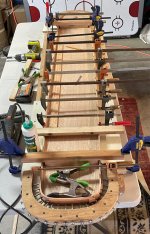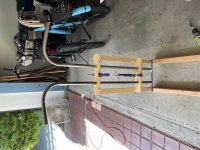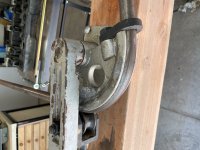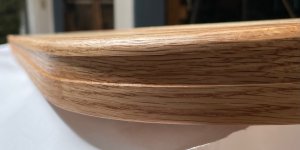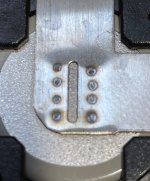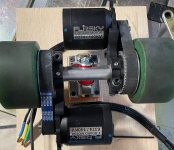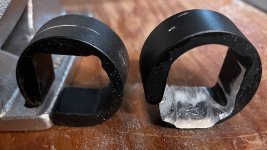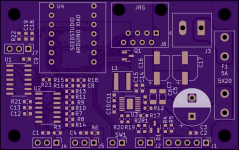Now back for earlier stuff
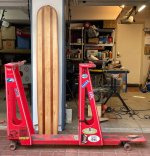
The foreground is the current scooter, vertically behind it is the new deck.
Current scooter is all Flintstonian propulsion. It does have LED lights, fixed intensity, powered by three AA batteries
Objectives for new scooter:
- Electrical assist to get us about 10 miles round trip
- Programmable LED lighting
- Less obtrusive handlebar assembly
The old scooter had cutouts for wheel clearance in turns, but that was to be avoided. We also wanted larger diameter wheels, so the ride height had to increase:
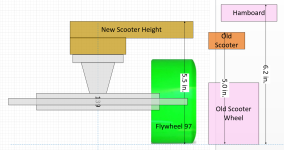
Old scooter wheel was ABEC 11 Centrax 77, but new is going to use 97mm Flywheels which I had laying around. I figured a 1/2" increase in ride height would be ok, especially as our knees get less pushing work due to electric motor assist.
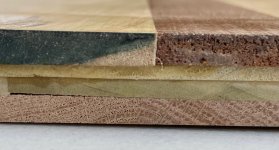
This shows the stackup of the deck lamination. Top is 7mm maple and mahogany. Middle are 3.5mm polar on 45° bias to top layer (not 90° like typical plywood). Bottom is red oak, about 7mm. Glue up was Titebond III.
I built a steam bender to allow laminating the perimeter of the deck with 3 plys of 6mm x 37mm oak. I tried to do this with mahogany but it would not take the 75mm radius at the rear of the deck.
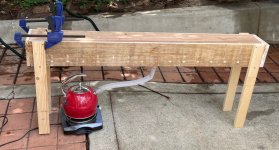
The steam bender is made from cedar fence boards, with a tea kettle and a hot plate.
Here are the laminations being glued up with a clamping jig I built.
